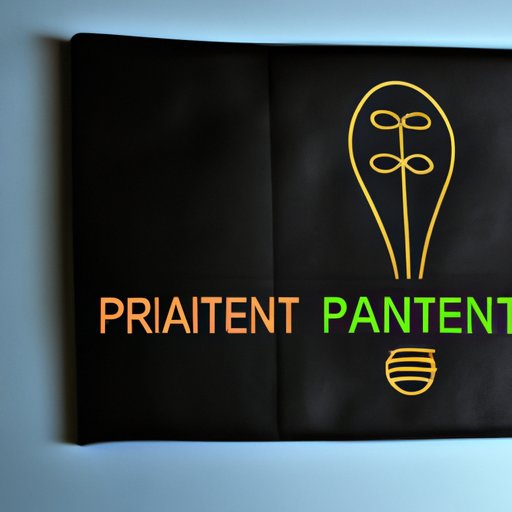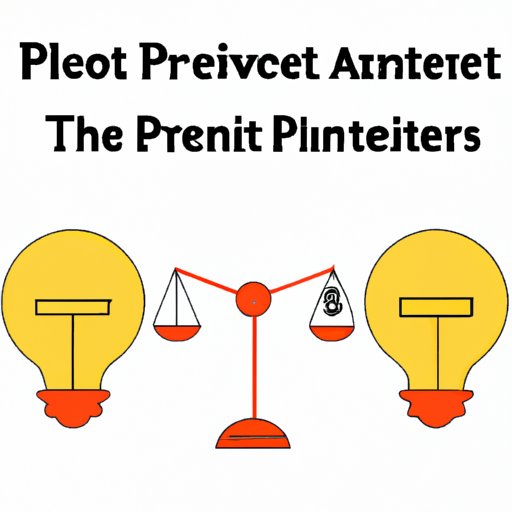

7 Ways to Patent Your Idea for Free: A Comprehensive Guide
Have you come up with a unique idea and want to protect it from being copied? If so, patenting it might be your best option. However, the cost of patenting an idea can be quite expensive, and not everyone has the resources to do so. But don’t worry – there are still ways to patent your idea for free.
In this comprehensive guide, we will discuss seven proven methods for patenting your idea for free. Whether you are a budding entrepreneur or just starting out, these methods can help you save money while legally protecting your invention.
Method 1: Provisional Patent Application
A provisional patent application (PPA) is a quick way to establish a filing date for your invention. This method allows you to establish a priority date for your invention, and you can use this date to claim the invention as your own for any subsequent patent application.
The main advantage of this method is that it buys you time to develop your invention and to raise money for a full utility patent application. However, a PPA is only valid for one year, and you will need to file a full patent application before the end of the year to maintain the filing date. Note that a PPA does not provide legal protection, only a filing date.
Method 2: Public disclosure
Another way to patent your idea for free is to publicly disclose your invention. This could be done by publishing an article about your invention, presenting it at a conference, or by posting a video online.
Public disclosure can act as prior art, which can be used to invalidate a subsequent patent application. Thus, by publicizing your invention, you are effectively protecting it from being patented by someone else.
However, it is important to note that public disclosure only protects you in countries with a “grace period” for public disclosure. In the United States, for example, you have up to one year to file a patent application after your public disclosure.
Method 3: Open-source patenting
Open-source patenting is a collaborative approach to patenting that involves sharing your invention with the public while protecting it with a license. You can draw up a license that allows others to use your invention as long as they give you credit.
This method can be especially useful if you are interested in using your invention to promote a cause or if you are looking for donors to support your work.
Method 4: Trade Secret Protection
If your invention is a process or method of doing things, you might consider trade secret protection. Trade secrets are things that give companies a competitive advantage but aren’t disclosed to the public.
To protect your trade secrets, you must keep them confidential. This means that you cannot disclose the secrets to anyone who does not have a legitimate need to know. Additionally, you must take reasonable measures to keep your secrets confidential, such as locking them up or requiring employees to sign non-disclosure agreements.
Method 5: Use Creative Commons
Creative Commons is a platform that allows inventors to share their creations under specific terms and conditions. With Creative Commons, you could make your invention available to others for non-commercial use or allow them to modify it as long as they give you credit.
Method 6: Patent Cooperation Treaty (PCT)
The Patent Cooperation Treaty (PCT) is an international patent application that protects your invention in all member countries. The PCT buys you time to decide in which countries you want to seek patent protection.
The PCT process begins with an initial patent application which is then followed by a final application that is submitted within 30 months of the initial filing date. The process can be expensive but is still a cheaper alternative to filing a separate patent application in each country where you want to seek protection.
Method 7: Work with a pro bono patent attorney
Many lawyers, law schools, and legal clinics offer pro bono services. This could include help with patent applications, intellectual property research, and legal advice.
Working with a pro bono attorney can be a great way to protect your invention without breaking the bank. However, keep in mind that the demand for pro bono services is high, and it can be difficult to find an attorney who is willing to work on your case for free.
Conclusion
As you can see, there are several ways to patent your idea for free. Whether you choose to file a provisional patent application, use public disclosure, or work with a pro bono patent attorney, it is important to protect your invention from being copied.
Remember that patent laws can be complex, so it is always a good idea to seek legal advice before taking any action. With some creativity and perseverance, you can successfully patent your idea without spending a dime.





